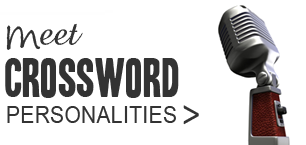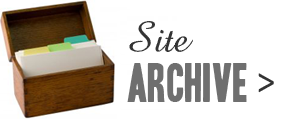| Our guest writer, Chaturvasi, describes the steps to create one’s own cryptic crossword grid from scratch, without the use of grid-generation software. At the end of this article, you will have with you a complete 15x15 grid that satisfies all good practices of checking, connectivity, symmetry and a balanced word length distribution. Chaturvasi is the pseudonym of C. G. Rishikesh, who blogged on Tuesday FT crossword in www.fifteensquared.net for more than a year. He is a frequent commenter in international forums where he is known by his short name, Rishi. This author, who lives in Chennai that was Madras, is a published crossword setter. |
This post is an attempt to compose a 15x15 blank grid for crossword purposes. While trying our hand at crossword composing, we could simply copy a published grid and put in our selection of lights and write clues. If we are using a crossword software, we have the choice of selecting one from its in-built library of grids. But this kills originality and deprives us of the pleasure of calling a crossword grid our own. (The one that we create may also have been arrived at by another, but that is a different matter.)
The basic pattern could be one of four: 
We shall take pattern a and go on to construct a grid.

Deciding that we will not have too-long entries (such as 13-, 14- or 15-letters) we first block 1h (where 1 is row and h is column). For symmetry we block also 15h.
We will move on to row 3. Here we block 3j. (As we did that, we might have had some reasons at the back of our mind. We avoided blocking 3b as it will give us three consecutive unches vertically in col. a; we avoided 3c because it will give two consecutive vertical/horizontal blanks and two-letter slots are no-nos). For symmetry we block 13f. If we are blocking 10th cell from left in row 3 from top, to achieve symmetry what we do is block 10th cell from right in row 3 from bottom.

Now the position is:
We again skip the row with alternate blacks and whites.
As four-letter lights are admissible, we block 5a, getting a four-letter slot in column a. This is first cell from left in fifth row from top. For symmetry, we block 11o, the first cell from right in the fifth row from bottom.
We notice that we have a long fourteen-letter slot in fifth row. As our aim is not to have long entries, we break it by blocking 5h. It is the eighth cell from left in fifth row from top; for symmetry, we block the eighth cell from right in fifth row from bottom. It is 11h.

The position is:

We skip sixth row with its blacks and whites.
In the next row we block 7e, whereby getting a nice design of blocks; for symmetry we block 9k. (Remember, if its fifth cell from left in seventh row from top, the symmetrical cell is fifth from right in seventh row from bottom.)
We have ten-letter lights in seventh and ninth rows but we retain them as there is a possibility of putting in long, but not too long, phrasal entries.
Having reached the middle row of our grid, we take a pause and re-examine the grid to see if there are any problems such as three or two consecutive unches. Not likely as we have taken care already.
The eighth or the middle row is one of alternate blacks and white. As usual we skip it.

Let's look at the position:

We have already reached an acceptable grid but we have four 15-letter slots. As our avowed objective is to avoid any slot with more than 10 letters, we shall have to see how to remedy the situation.
So far we have been looking only at all-white rows, carefully placing blocks to suit our purposes. We have reached the middle row of alternate blacks and whites and find that the rest of the rows are either one of alternate blacks and whites, or one where one or more cells have become blocks by virtue of symmetry.
That means to avoid the long 15-letter slots, we have to do any tinkering in any column with blocks as well as blanks.
Let's first take column c and see what we can do. Let's block 10c. This breaks the 15-letter slot and gives us two, one of 9 letters and the other of five letters.
We could block 4c but it gives a three-letter slot which we may avoid, though three-letter slots are admissible.
We could block 6c or 8c but the effect is not pleasing as it disturbs the two X designs in our grid.
Our decision to block 10c is a wise one and let's implement it. This is third from left in tenth row from top. As we have crossed the mid point, to achieve symmetry we go to the top half of the grid. We have to block 6m, the third cell from right in tenth row from bottom.

The position is:

Now we are left with only two 15-letter slots.
Let's take col g. We will not block 4g to avoid three-letter slot. We will not block 6g so that we don’t disturb our Xs. We can block 10g: this is the seventh cell from left in tenth row from top. For symmetry we block 6i, the seventh cell from right in tenth row from bottom. This gives us an L of blacks with another inverted L - familiar design in many a crossword grid.

The final position is:

The numbering of clue slots remains to be done. That will be taken up in a separate post. [Update: Follow-up to this article here – Numbering the clue slots in the grid.]
But an analysis of our grid might be done straightaway.
It has a total of 32 slots: 16 across and 16 down.
Of the 225 cells, 63 are blocked, while 162 are whites or blanks or letters to be filled in.
| Word Length | No. Of Words |
| 4 letters | 4 |
| 5 letters | 6 |
| 6 letters | 4 |
| 7 letters | 6 |
| 8 letters | 2 |
| 9 letters | 6 |
| 10 letters | 4 |

Related Posts:
- Numbering The Clue Slots In The Grid
- Basics Of The Crossword Grid
- Crossword Grid: Checking
- Crossword Grid: Connectivity
- GridmANALysis: Chaturvasi analyzes grids used by compiler Gridman of The Hindu
- Chaturvasi's Interview
If you wish to keep track of further articles on Crossword Unclued, you can subscribe to it in a reader via RSS Feed. You can also subscribe by email and have articles delivered to your inbox, or follow me on twitter to get notified of new links.










 Follow on Twitter
Follow on Twitter Join us on Facebook
Join us on Facebook Get RSS
Get RSS

7 comments
Thanks for this insightful article, CVasi Sir. It'll be of great help to budding crossword setters.
Good information. I hadn't thought about the aesthetics of the X-design before, so my grids are probably funky by C'vasi standards.
I'd like to invite everyone to come sample my crossword collection. Comments and feedback are welcome. Happy solving!
Hello Kryptonologist,
Thanks for sharing your crossword collection. I looked at some of your recent puzzles and liked many of your clues a lot.
Hi Rishi,
This is a great article, and very instructive. It has motivated me to put more effort into making my own grids, instead of taking the easy way out by using versions of grids that come with a software application. I also have a tendency to use more 3-letter words than I probably should, based on your comments.
Great stuff, Rishi .. thank you!
What program should I use to construct my own grid? I have the finshed crossword on paper, but I need a grid design program that gives me the freedom to draw the exact grid...
Hi Peter, Have a look at Useful Tools for Crossword Setters.
Looking for program or code that I can use to generate a grid matching say the grid in a cryptic crossword image I have photographed from a newspaper.
At my leisure I would then enter the answers directly into the grid on my mobile device.
Post a Comment